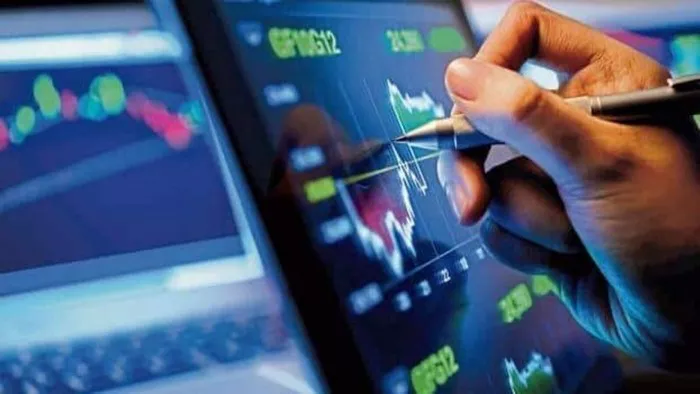Trading futures can be a lucrative and exciting endeavor for investors seeking to diversify their portfolios and capitalize on market opportunities. ETRADE, a renowned online brokerage platform, provides traders with the tools and resources needed to engage in futures trading.
Understanding Futures Trading
Before diving into the specifics of trading futures on E*TRADE, it’s crucial to have a clear understanding of what futures contracts are. Futures are financial derivatives contracts that obligate the parties involved to buy or sell a specified asset (the underlying asset) at a predetermined price on a future date. Futures contracts exist for a wide range of assets, including commodities like oil and gold, financial instruments like stock market indices, and even cryptocurrencies like Bitcoin.
Opening an ETRADE Account
To begin trading futures on ETRADE, you must first have an active ETRADE brokerage account. If you do not already have an account, you can easily open one by visiting the E*TRADE website and following the account opening process. You’ll need to provide personal information, financial details, and complete the required paperwork.
Funding Your Account
Once your ETRADE account is open, you’ll need to fund it with the necessary capital to trade futures. ETRADE offers various funding options, including electronic transfers, wire transfers, and checks. Ensure that your account has sufficient funds to cover your initial margin requirements, as specified by the exchange where the futures contract trades.
Educational Resources and Research
E*TRADE provides a wealth of educational resources and research tools to help traders understand the futures market. Explore the platform’s educational materials, webinars, and market analysis to deepen your knowledge of futures trading. Being well-informed is crucial to making informed trading decisions.
Selecting a Futures Brokerage Account
To trade futures on ETRADE, you’ll need to open a separate futures brokerage account, which is linked to your primary ETRADE account. This process involves completing additional paperwork, including a risk disclosure statement. Your futures brokerage account allows you to access futures markets and trade various contracts.
Comprehending Futures Margin
Margin requirements for futures contracts can vary, and it’s essential to understand how they work. Futures margin is the amount of capital that traders must have in their accounts to cover potential losses. E*TRADE will specify the margin requirements for each futures contract, and it’s vital to monitor your account to ensure you meet these requirements.
Choosing a Futures Trading Platform
ETRADE offers a powerful trading platform known as Power ETRADE, which provides real-time data, charting tools, and customizable trading interfaces. Familiarize yourself with this platform, as it will be your primary tool for executing futures trades. Take advantage of the platform’s paper trading feature to practice trading without risking real capital.
Placing Futures Orders
Trading futures on E*TRADE involves placing orders to buy or sell contracts. The most common order types for futures trading include market orders, limit orders, and stop orders. Market orders execute immediately at the current market price, while limit orders specify a price at which you are willing to buy or sell. Stop orders become market orders once a specific price level is reached, helping manage risk.
Risk Management and Stop Loss Orders
Risk management is a crucial aspect of futures trading. To mitigate potential losses, consider using stop-loss orders. These orders automatically sell a futures contract when its price reaches a predetermined level. Setting stop-loss orders helps protect your capital and limit potential losses in volatile markets.
Monitoring and Managing Your Positions
After executing a futures trade on ETRADE, it’s essential to actively monitor your positions. Keep an eye on market conditions, news events, and any factors that may affect the futures contract you’re trading. ETRADE’s trading platform provides real-time data and tools for tracking your positions and making informed decisions.
Exiting Your Futures Positions
Exiting a futures position can be done by either closing out the contract before its expiration date or allowing it to expire. If you choose to close out your position, you can place a sell order to offset your previous buy order or a buy order to offset your previous sell order. Be mindful of contract expiration dates, as holding a position through expiration may result in physical delivery of the underlying asset (if applicable), which can be complex and costly.
Advanced Futures Trading Strategies
As you gain experience in futures trading on E*TRADE, you may explore advanced strategies such as spread trading, options on futures, and trading futures in different asset classes. These strategies can provide additional ways to profit from and manage risk in the futures market.
Conclusion
Trading futures on ETRADE offers investors access to a diverse range of markets and the potential for profit through speculative and hedging strategies. By following the steps outlined in this guide, from opening an ETRADE account to executing your first trade, you can embark on your futures trading journey with confidence. Remember that futures trading carries inherent risks, and it’s essential to educate yourself, practice responsible risk management, and continually refine your trading strategies as you navigate the dynamic world of futures markets.

